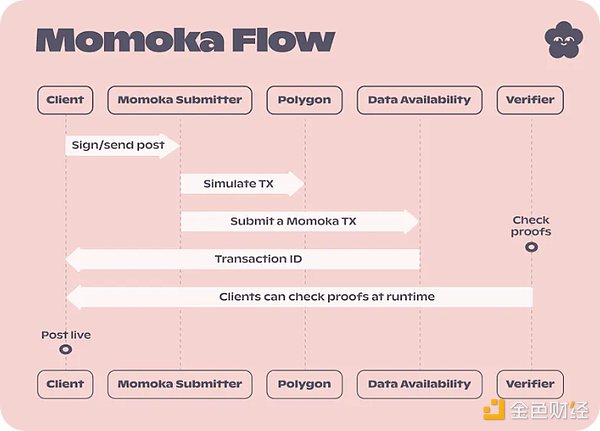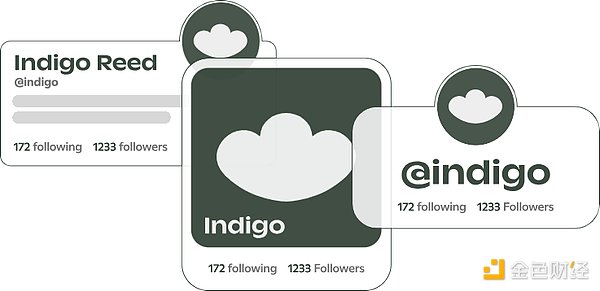Author: William M. Peaster, Bankless; Compiler: Deng Tong, Golden Finance
There is big news in the crypto social field today. Lens has just launched a permissionless registration feature.
This means Anyone can now create a Lens profile without an invitation, opening up to more Open decentralized social network to a wide audience.
Therefore, This update makes Lens comparable to Farcaster, which launched permissionless access in October 2023, is the current king among encrypted social platforms.
Farcaster has seen explosive growth since then, especially with the launch of Farcaster Frames (interactive publishable applications) earlier this year.
So the main question now is clear: Can Lens rely on its own license now that it no longer requires a license? Second wave catching up with Farcaster's appeal?
I think it’s possible, so let’s dig in and compare these two emerging networks to see why.
Main similarities
Lens and Farcaster are both decentralized social graph projects and have Some similarities, as they both aim to redefine the social networking landscape. Here are their most similar places:
Decentralization
strong>—Both protocols are built on blockchain technology to reduce reliance on centralized intermediaries. Ownership – In contrast to traditional social networks, users on both platforms have control and ownership of their data. This includes owning your own content, profiles and social connections and the ability to port this data across different applications.
Interoperability - Lens and Farcaster are open and interoperable, allowing third-party developers to build on top of their infrastructure Build. This openness encourages innovation within the ecosystem and the development of new applications and services.
User-centric – Both platforms prioritize the interests and needs of content creators. Their goal is to create an environment that supports content monetization, audience growth, and direct interaction between creators and their communities without the intermediary of traditional social media companies.
Main architectural differences

Lens’ smart contracts are deployed on Polygon, while Farcaster’s smart contracts are deployed on Optimism Layer 2 (L2) scaling solutions. These networks can bypass the congestion and higher costs that would come with using Ethereum directly, while still being anchored to L1.
In addition to different chain foundations, Lens and Farcaster process data in unique ways through Momoka and Farcaster Hub respectively:
Momoka - Custom Optimistic L3 focused on data availability. While storing data on Polygon has always been an option, Lens has integrated with Momoka to provide the ability to process certain transactions off-chain, allowing for a faster and cheaper user experience.
Farcaster Hubs - A distributed server network used to store, validate and serve Farcaster data, enabling efficient data processing and You won’t face the bottleneck of managing everything on the Ethereum mainnet.
Decentralized identity and account creation

Lens and Farcaster also rely on different identity management systems. Here's a quick overview of their approach:
Farcaster: Accounts and Usernames
Account creation —— Farcaster account is bound to the Ethereum address and is created by interacting with the smart contract. And identified using unique Farcaster IDs (fids).
Username —— Farcaster uses the Ethereum Name Service (ENS) as the username, supporting on-chain (.eth name) and off-chain ENS names(fnames). Usernames are linked to Ethereum addresses, but the difference is that an address can have multiple ENS names, specifying which name Farcaster uses.
Lens: Configuration Files and Handles
< li>Profile NFTs – These NFTs represent ownership of a user’s social graph and content. A Polygon address can hold multiple Profile NFTs that track a user’s posts, comments, and social interactions. They can also be modified through extensions, such as the Follow module for managing permissions.
Handles - Introduced in Lens v2, Handles (like @alice) are created individually and can be linked or unlinked from a profile Link. This system allows for flexible identity representation and management within the Lens ecosystem.
Getting Started
Starting today, anyone can access lens.xyz to create a Lens configuration file. There is a flat fee of MATIC 10 (about $10 at the time of writing) to create a profile, with the option to pay by credit card. With your profile in hand, you can start using apps in the Lens ecosystem.
On the physical side, Farcaster currently allows mobile users in supported countries to sign up for free through its most popular front-end, Warpcast. For everyone else outside this scope, there's a $5 threshold fee to start using the app.
Comparing Lens and Farcaster apps

The above Warpcast is developed by the Farcaster team and is a flagship application similar to Twitter in the Farcaster ecosystem, designed to showcase and Be at the center of early functionality for Social Protocol. It is also complemented by the growing growth of alternative third-party apps like Farcord and Supercast.
In contrast, the Lens team intentionally did not create a main front-end for its protocol in order to leave Lens application scenarios entirely to community builders. Several projects have gained early traction, namely Hey (desktop Lens client), Orb (mobile Lens client), and Buttrfly (social browser for Lens).
Lens Open Action vs. Farcaster Framework

Last month, Farcaster released support for Frames, bringing certain impact to the encrypted social field. Built as an extension of Facebook's old Open Graph protocol, Frames can embed interactive applications directly into Farcaster-based social feeds, triggering actions at the press of a button to update Frame's content in real time.
This design blends the rigidity of the front-end experience with the flexibility of back-end execution, where the front-end is defined by embedded URLs and execution logic is handled in the background through custom functions. As a result, Frames can be used to publish anything—from one-click NFT minting to voting.
Lens has its own native answer here, namely Open Actions, an architecture used to enable smart contract calls to be directly embedded in Lens on-chain publications, such as comments. This feature allows developers to integrate specific contract calls, parameters, and even complex logic such as token-gating or follow-gating in a social environment.
The "Tip" open action is an early example whereby posters can include a module that directs tips to specified recipient addresses. However, as is the case with frameworks, the possibilities for open operations are vast.
Of course, it's worth noting that ultimately none of these systems are isolated from each other and can interoperate, for example via Lens and Farcaster link operations. The Open Frames effort to allow lighter versions of Frames to work outside of Farcaster also suggests that more interoperability will emerge at these intersections.
Future Outlook
Farcaster currently has over 200,000 users, many of whom have joined in the past month as getting started becomes smoother and Frames becomes more Popularity. The protocol's permissionless underpinnings have proven themselves along the way, and breakthrough success appears to be on the horizon.
Now, it’s time for Lens to prove himself. Farcaster is in the lead, to be sure, but Lens has amassed more than 125,000 profiles without permission, which suggests it has a solid foundation to build on. Since Lens offers some of the same general ingredients as Farcaster, Farcaster's early success suggests Lens can soar with similar momentum.
Will one side eventually defeat the other? Maybe that's it. Farcaster is currently the clear king, and that king is expanding to other ecosystems, such as Solana. But keep in mind that the cryptocurrency social scene is still in its infancy, so rising popularity here looks set to drive both forward for the foreseeable future.
Additionally, web3 cross-posting applications like Yup (which lets you publish content to Twitter, Farcaster, and Lens simultaneously) and projects like Open Frames show that Farcaster and Lens can evolve in parallel and complementary ways, at least in the short term This is the case.
No matter what happens, both projects currently have great prospects, so don’t give up on Lens just yet!
 JinseFinance
JinseFinance
 JinseFinance
JinseFinance JinseFinance
JinseFinance JinseFinance
JinseFinance JinseFinance
JinseFinance JinseFinance
JinseFinance JinseFinance
JinseFinance Joy
Joy JinseFinance
JinseFinance JinseFinance
JinseFinance JinseFinance
JinseFinance